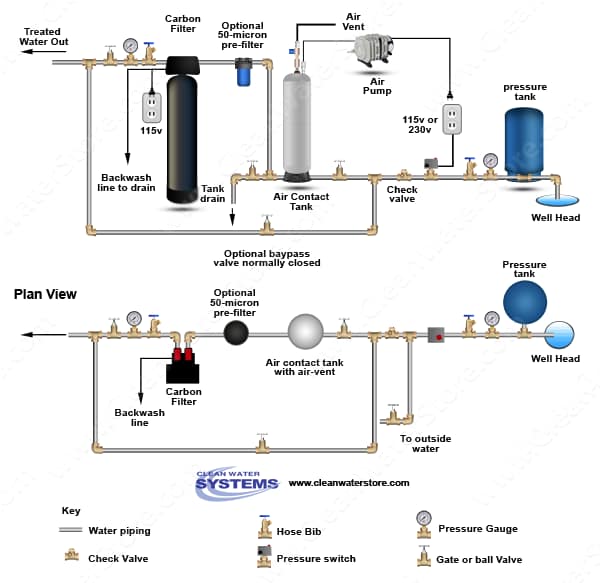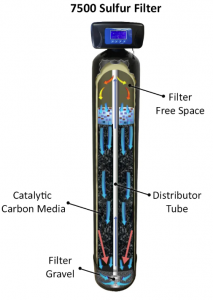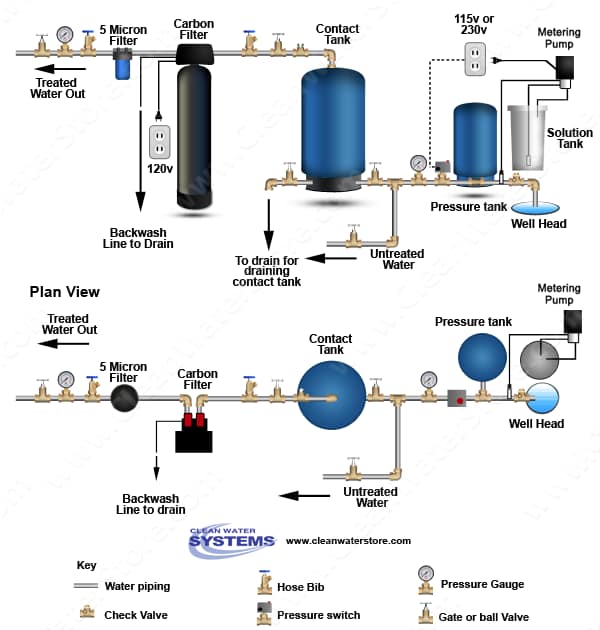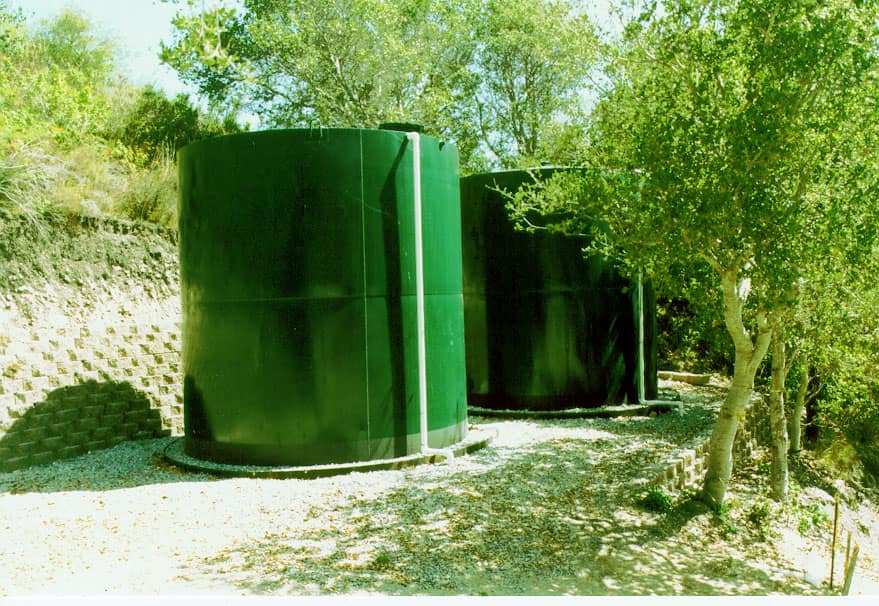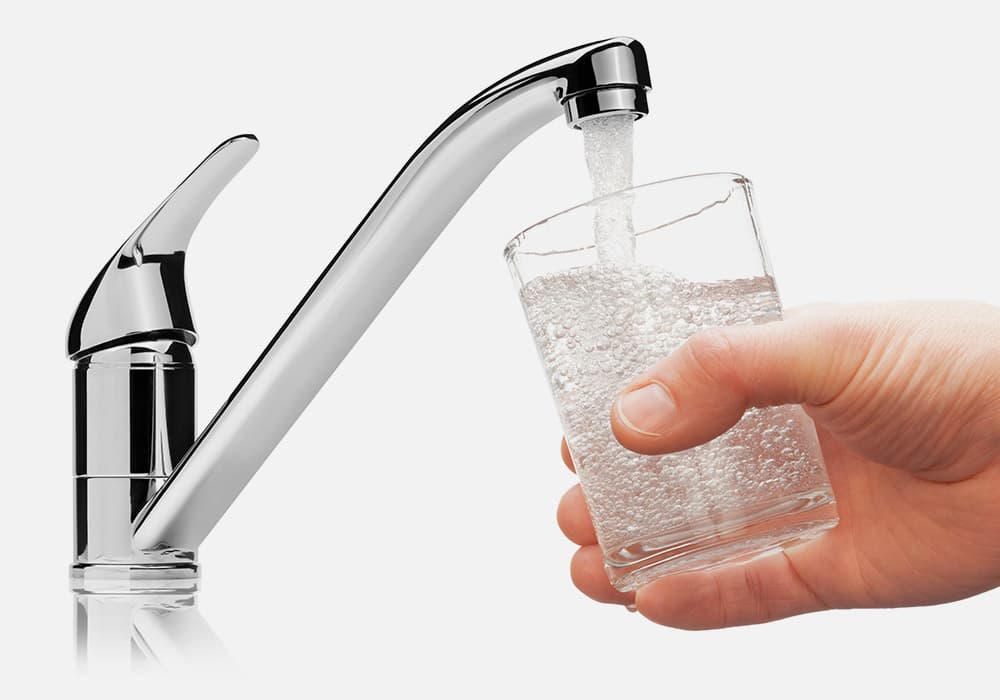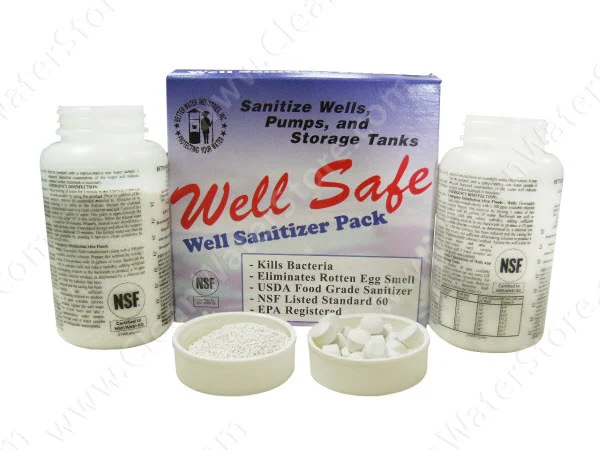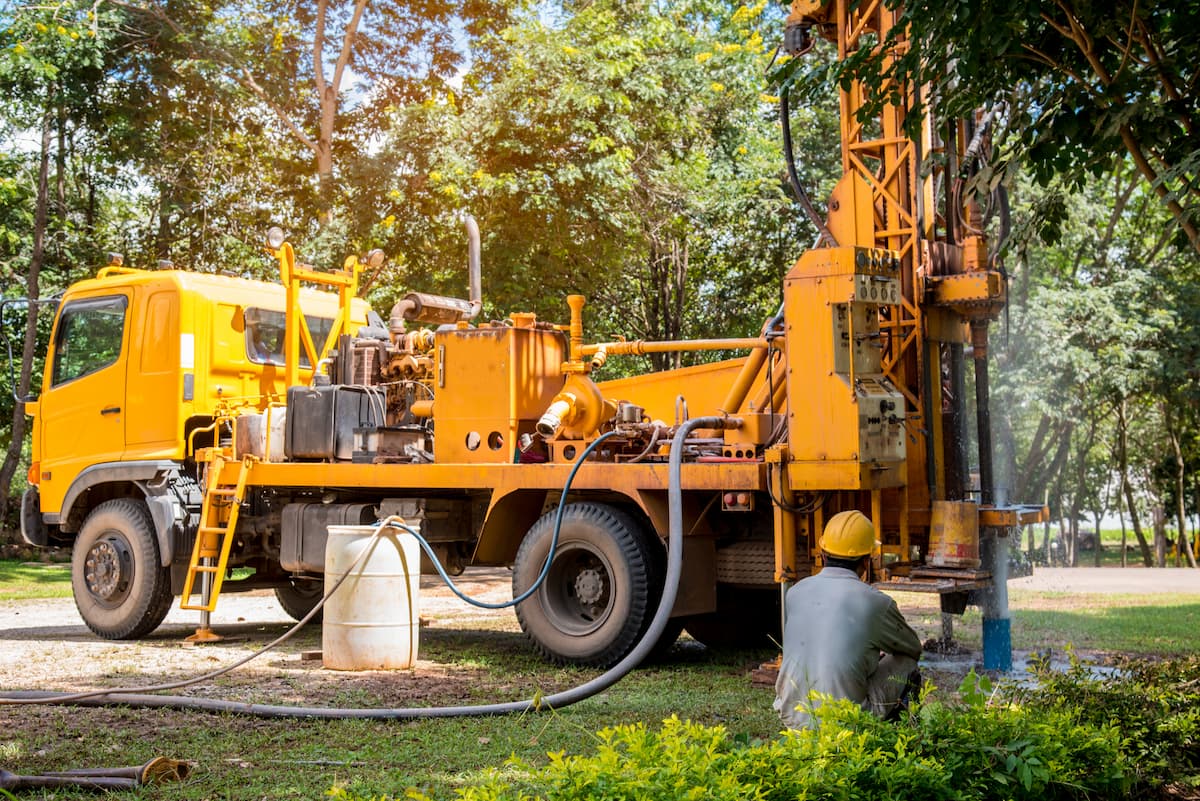How To Fix Well Water That Smells Bad? Simple Actions to Take.
 Rotten-egg smell in your well water?
Rotten-egg smell in your well water?
Fix well water that smells bad:
1. Aerate water and/or inject air or oxygen
2. Chlorinate well water to eliminate both sulfur and bacteria
3. Install a Catalytic Carbon Air Injection Backwash Filter
4. Inject hydrogen peroxide and filter with catalytic carbon.
5. Follow aeration, chlorination, ozone, or peroxide injection with activated carbon filtration
Many homeowners contact us to find out how to fix well water that smells bad. Water containing hydrogen sulfide gas (“H2S”) has a distinctive “rotten egg” odor, which may be especially noticeable when running hot water.
Such water can discolor coffee, tea, and other beverages and affect the taste of water. It can also change the taste of cooked foods. Hydrogen sulfide (“H2S”) gas is a nuisance that is not usually a health risk at concentrations normally found in household water.

H2S dissolved in water corrodes plumbing metals, such as iron, steel, copper, and brass, and exposed metal parts in washing machines and other water-using appliances. The corrosion of iron and steel from hydrogen sulfide forms ferrous sulfide or “black water,” which darkens silverware and discolors copper and brass utensils.
Sources of Hydrogen Sulfide
Iron and sulfur bacteria present in groundwater use iron and sulfur as energy sources and chemically change sulfates to produce H2S gas.
These bacteria use the sulfur available from decaying plants, rocks, or soil and often thrive in an iron-rich environment. The harmless, non-toxic bacteria normally exist in oxygen-deficient environments, such as deep wells and plumbing systems. The bacteria do not usually cause health problems but contribute to bad tastes and/or odors at low levels.
Hydrogen sulfide gas may also be present naturally in wells drilled in shale or sandstone, near coal or peat deposits, or in oil fields.
Though H2S is normally found in wells, it can also enter surface water through springs and quickly escape into the atmosphere. Water heaters can often become a source of foul H2S odors. The magnesium rod used in heaters for corrosion control can chemically reduce sulfates to H2S. Another source of H2S is sewage pollution.
Water heaters can often become a source of foul H2S odors. The magnesium rod used in heaters for corrosion control can chemically reduce sulfates to H2S. Another source of H2S is sewage pollution.
Other odors, such as cucumber odor, pond odor, or algae-type odor, and sulfur odor, are most often the result of various bacteria in the water. Sulfur bacteria, iron bacteria, and other types of bacteria may be harmless to health but cause many odor problems. Odors are worse when the water is warmer or when the water sits in pipes for periods of time.
To fix well water that smells bad, a one-time shock chlorination can sometimes eliminate the odor for several weeks or months.
Kill Odor-Causing Bacteria & Remove Odors With Oxidation Followed by Filtration
Odors are best eliminated by first applying an OXIDANT, followed (usually) by FILTER MEDIA. In some cases, aeration combined with carbon filter media alone can be used if the odor is low to moderate, although no disinfection will take place with aeration alone.
Sulfur odors (hydrogen sulfide gas) are often caused by sulfur-related bacteria. If the bacteria is present, the odor can redevelop in the household piping, even after filtration. Using a chlorination or ozone system can kill these bacteria and prevent the odor from coming back later.
Generally, it is best to use a disinfecting oxidant such as chlorine or ozone, followed by activated carbon, to permanently eliminate the odor. Note that peroxide in water is not considered a strong disinfectant and may not be effective at eliminating these bacteria.
Aeration is a well-established, low-cost method of eliminating odors from water, especially for lower levels of odors and when bacteria is not a problem.
There are several main methods for residential applications:
- Air injection by a venturi injector
- Air injection by air pump (air compressor) in a closed pressure tank
- Air injection by spraying the well water into an open (non-pressurized) storage tank
- Single-tank air-charger type carbon filter
Air Compressor Injection System Diagram:
Single Tank Air Charger Sulfur Filters
Air-charger-type backwash filters use aeration and catalytic carbon to remove odors from water. The Air-Charger maintains an air pocket at the top of the tank while the system is in service.
As the water passes through the air pocket, sulfur odors are oxidized and then filtered out by the catalytic activated carbon. The Air-Charger 5900-AIR Air Injection Oxidizing Filter, as a single tank system, is an efficient and
The Air-Charger 7500-AIR Air Injection Oxidizing Filter, as a single tank system, is efficient and cost-effective for removing sulfur odors.
Air-Charger type filters can contain catalytic carbon media, OR if iron is present, use Pro-OX iron filter media.
If the sulfur smell is present alone, catalytic carbon can be used. If iron or manganese is present in the water along with odors, manganese dioxide filter media is recommended.
Chlorine is a Low-Cost Disinfectant that Kills Bacteria and Eliminates Odors
Activated carbon can remove chlorine, so tap water does not have a chlorine taste or odor. See chlorination systems here.
Best Filter Media to Use with Different Oxidant Types
- Aeration: Use Catalytic Carbon or Pro-OX Manganese Dioxide
- Hydrogen Peroxide: Use Catalytic Activated Carbon
- Chlorine Bleach: Use Standard Activated Carbon, or Greensand, or Pro-OX
- Ozone Gas Injection: Use Catalytic Carbon, Greensand or Pro-OX
- Potassium permanganate: Use Greensand or Pro-OX media
| Oxidant Type | Best pH range | Kills bacteria? | Minutes of contact time required* | Advantages | Disadvantages |
| Aeration | 5.0-7.0 | No | 3-10 | Low cost; safe | Weakest oxidant; does not kill sulfur bacteria; adds gasses to water which must be vented off. |
| Hydrogen Peroxide | 6.0-8.5 | Yes | 1-2 | Fast working; no chemical residual in water; safe; no after-tastes; | Moderate expense to buy peroxide on an annual basis. |
| Chlorine Bleach | 6.0-7.4 | Yes | 5-10 | Low cost; leaves chlorine residual for downstream disinfecting | Puts sodium into water, slow acting, very pH dependent; can create THMs and other toxic residuals; |
| Ozone Gas | 6.0-8.0 | Yes | 1-2 | Fast working; does not leave a chemical residual in water; safe | High cost of ozone systems; adds gasses to water which must be vented |
| Potassium permanganate | 6.5-7.4 | No | 5-10 | Good at eliminating a wide variety of odors | Pink water; can be toxic if over-fed; needs to be used with greensand; causes severe staining if not handled properly |
| * Estimated time. Depends on pH and temperature | |||||
Trusted Resources on Well Water Quality
To ensure that our readers have access to the most accurate and up-to-date information on well water quality, we've curated a list of authoritative government and educational links. These resources provide in-depth insights and guidelines on maintaining and improving the quality of well water, especially when faced with issues like unpleasant odors. We believe in empowering our readers with knowledge from reputable sources so you can make informed decisions about your home's water supply.
- U.S. Environmental Protection Agency (EPA) – Private Drinking Water Wells: This page provides comprehensive information about private drinking water wells, including potential contaminants and how to protect your water source.
- Centers for Disease Control and Prevention (CDC)—Private Wells: This page offers guidance on maintaining and testing private wells to ensure safe drinking water.
- National Ground Water Association (NGWA)—Well Owner Resources: The NGWA provides various resources for well owners, including tips on water quality and well maintenance.
Frequently Asked Questions (FAQs)
1. What causes the rotten egg smell in well water?
The odor comes from hydrogen sulfide gas (H₂S), often produced by sulfur bacteria or chemical reactions involving magnesium rods in water heaters.
2. Is hydrogen sulfide in well water harmful?
At low levels, it’s mostly a nuisance, but high concentrations can be toxic and flammable. It can also corrode plumbing and stain fixtures.
3. Why is the smell worse with hot water?
Hot water heaters can amplify sulfur smells by reacting with magnesium anode rods, creating more hydrogen sulfide gas.
4. Will shock chlorination remove the odor permanently?
Shock chlorination can temporarily eliminate odor, but bacteria can regrow in the plumbing. Long-term solutions usually involve oxidation and filtration systems.
5. What’s the best system for removing hydrogen sulfide from well water?
The best method depends on your water chemistry. Common solutions include aeration, chlorination with carbon filtration, or hydrogen peroxide injection followed by catalytic carbon.
6. Can I use just an activated carbon filter to remove the smell?
Activated carbon helps, but for moderate to strong odors, you’ll likely need an oxidizing system (like air, peroxide, or chlorine) before the carbon filter.
7. How does aeration work to remove odors?
Aeration systems inject air into the water, oxidizing hydrogen sulfide so it can be filtered out. They’re effective for low to moderate odor levels.
8. Is hydrogen peroxide better than chlorine for odor removal?
Hydrogen peroxide is faster acting, leaves no chemical aftertaste, and works over a wider pH range. However, it doesn’t leave a disinfecting residual like chlorine does.
9. Do I need different filters if iron is also present in my water?
Yes. If iron or manganese is present along with odors, use filter media like Pro-OX or manganese dioxide, which handle both odor and staining minerals.
10. How can I test my water to choose the right system?
A comprehensive water test can identify hydrogen sulfide, iron, pH, bacteria, and other factors. This info helps determine which treatment method will work best.


